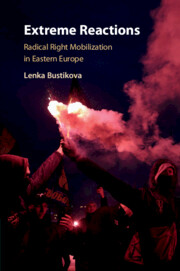Book contents
- Extreme Reactions
- Extreme Reactions
- Copyright page
- Dedication
- Contents
- Figures
- Tables
- Acknowledgments
- 1 Introduction
- 2 A Theory of Radical Right Mobilization
- 3 Radical Right Parties in Cross-National Perspective
- 4 Mobilization against Hungarians in Slovakia
- 5 Mobilization against Russians in Ukraine
- 6 Conclusion
- Appendix
- Bibliography
- Index
- References
Bibliography
Published online by Cambridge University Press: 03 November 2019
- Extreme Reactions
- Extreme Reactions
- Copyright page
- Dedication
- Contents
- Figures
- Tables
- Acknowledgments
- 1 Introduction
- 2 A Theory of Radical Right Mobilization
- 3 Radical Right Parties in Cross-National Perspective
- 4 Mobilization against Hungarians in Slovakia
- 5 Mobilization against Russians in Ukraine
- 6 Conclusion
- Appendix
- Bibliography
- Index
- References
- Type
- Chapter
- Information
- Extreme ReactionsRadical Right Mobilization in Eastern Europe, pp. 255 - 292Publisher: Cambridge University PressPrint publication year: 2019

